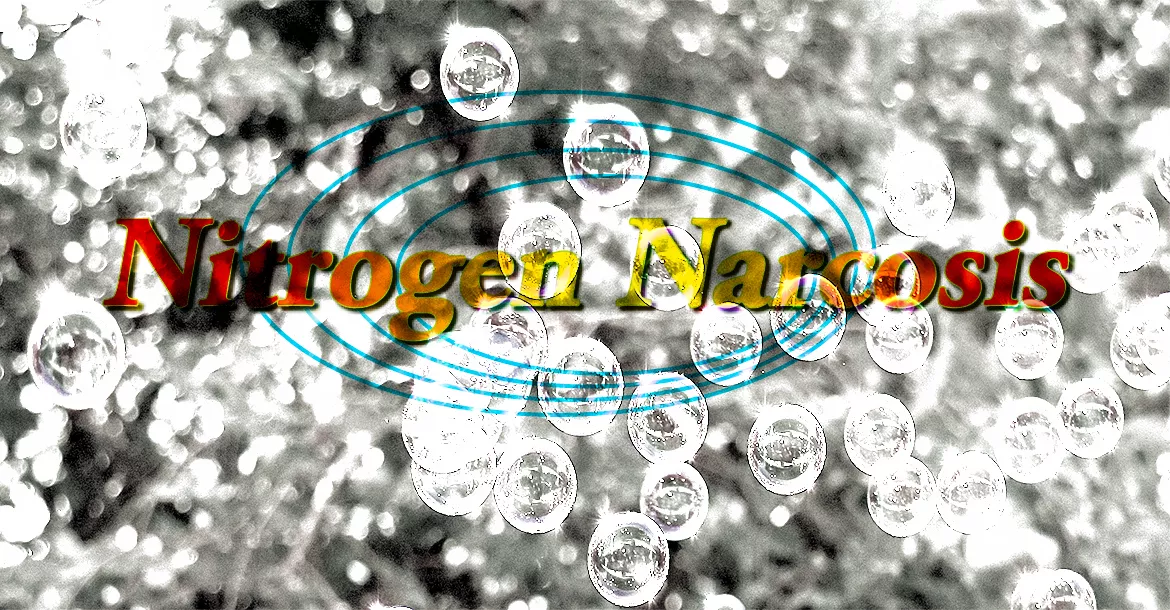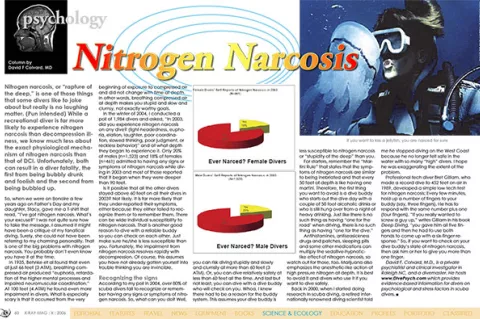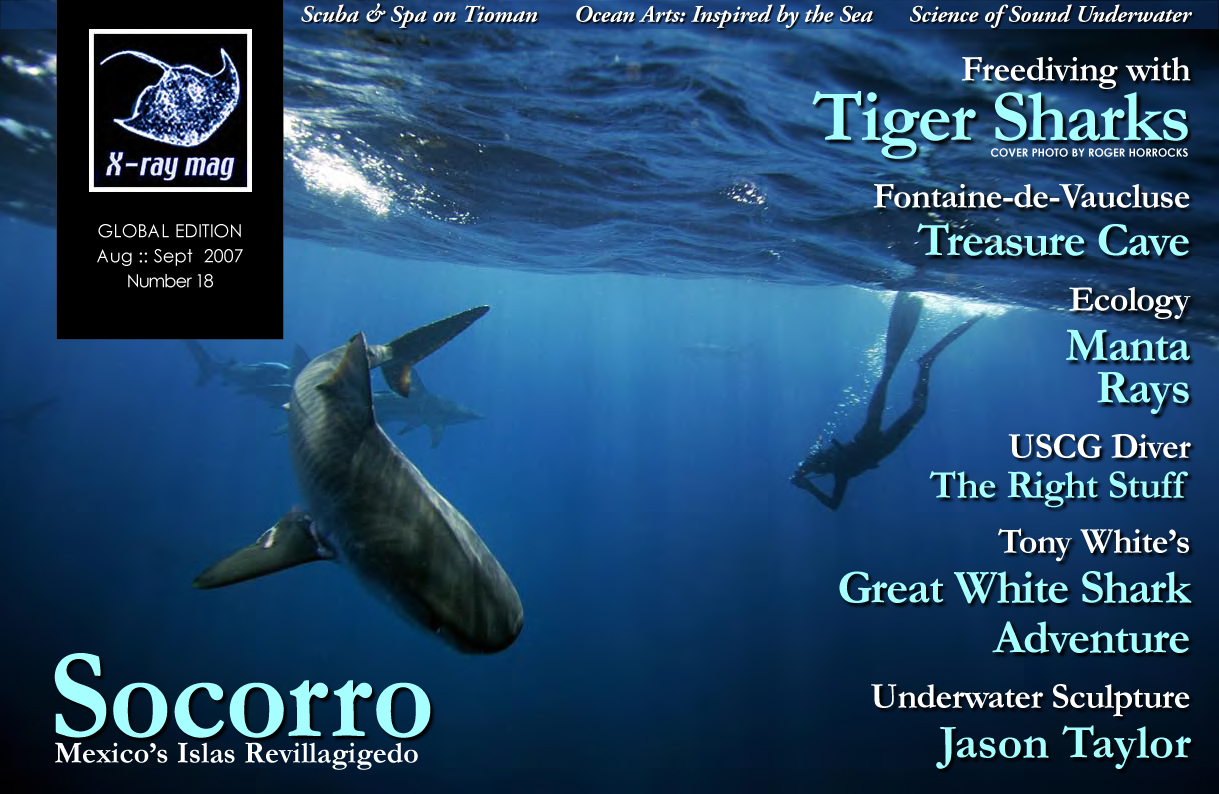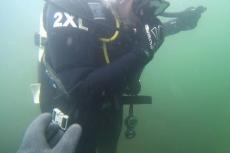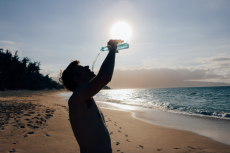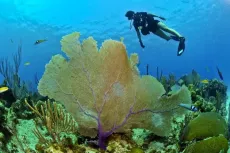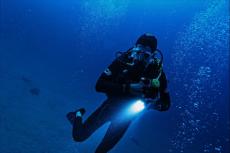Nitrogen narcosis, or “rapture of the deep,” is one of those things that some divers like to joke about but really is no laughing matter. (Pun intended) While a recreational diver is far more likely to experience nitrogen narcosis than decompression illness, we know much less about the exact physiological mechanism of nitrogen narcosis than that of DCI. Unfortunately, both can result in a diver fatality, the first from being bubbly drunk and foolish and the second from being bubbled up.
Contributed by
Factfile
David F. Colvard, M.D., is a private psychiatrist and clinical investigator in Raleigh NC, and a divemaster.
He hosts www.DivePsych.com which provides evidence-based information for divers on psychological and stress factors in scuba divers.
So, when we were on Bonaire a few years ago on Father’s Day and my daughter, Stacy, gave me a T-shirt that read, “I’ve got nitrogen narcosis. What’s your excuse?” I was not quite sure how to take the message. I assumed it might have been a critique of my fanatical diving. Surely, she could not have been referring to my charming personality. That is one of the big problems with nitrogen narcosis. You probably don’t even know you have it at the time.
In 1935, Behnke et al found that even at just 66 feet (3 ATM), breathing compressed air produced “euphoria, retardation of the higher mental processes and impaired neuromuscular coordination.” At 100 feet (4 ATM) he found even more impairment in divers. What is especially scary is that it occurred from the very beginning of exposure to compressed air and did not change with time at depth. In other words, breathing compressed air at depth makes you stupid and slow and clumsy, not exactly worthy goals.
In the winter of 2004, I conducted a poll of 1,984 divers and asked, “In 2003, did you experience nitrogen narcosis on any dive? (light-headedness, euphoria, elation, laughter, poor coordination, slowed thinking, poor judgment, or reckless behavior)” and at what depth they began to experience it. Only 20% of males (n=1,523) and 18% of females (n=461) admitted to having any signs or symptoms of nitrogen narcosis while diving in 2003 and most of those reported that it began when they were deeper than 90 feet.
Is it possible that all the other divers stayed above 60 feet on all their dives in 2003? Not likely. It is far more likely that they under-reported their symptoms, either because they either failed to recognize them or to remember them. There can be wide individual susceptibility to nitrogen narcosis. That is another good reason to dive with a reliable buddy so you can check on each other. Just make sure he/she is less susceptible than you. Fortunately, the impairment from nitrogen narcosis resolves rapidly with decompression. Of course, this assumes you have not already gotten yourself into trouble thinking you are invincible.
Recognizing the signs
According to my poll in 2004, over 80% of scuba divers fail to recognize or remember having any signs or symptoms of nitrogen narcosis. So, what can you do? Well, you can risk diving stupidly and slowly and clumsily at more than 60 feet (3 ATM). Or, you can dive relatively safely at less than 60 feet all the time. And last but not least, you can dive with a dive buddy who will check on you. Whoa, I knew there had to be a reason for the buddy system. This assumes your dive buddy is less susceptible to nitrogen narcosis or “stupidity of the deep” than you.
For starters, remember the “Martini Rule” that states that the symptoms of nitrogen narcosis are similar to being inebriated and that every 50 feet of depth is like having one martini. Therefore, the first thing you want to avoid is a dive buddy who starts out the dive day with a couple of 50 foot alcoholic drinks or who is still hung over from a night of heavy drinking. Just like there is no such thing as having “one for the road’ when driving, there is no such thing as having “one for the dive.”
Antihistamines, antiseasickness drugs and patches, sleeping pills and some other medications can multiply the sedative-hypnotic-like effect of nitrogen narcosis, so watch out for those, too. Marijuana also emphasizes the anesthetic-like action of high pressure nitrogen at depth. It is best to avoid it and divers who use it if you want to dive safely.
Back in 2000, when I started doing research in scuba diving, a retired internationally renowned diving scientist told me he stopped diving on the West Coast because he no longer felt safe in the water with so many “high” divers. I hope he was exaggerating the extent of the problem.
Professional tech diver Bret Gilliam, who made a record dive to 452 feet on air in 1989, developed a simple low tech test for nitrogen narcosis: Every few minutes, hold up a number of fingers to your buddy (say, three fingers). He has to respond with the same number plus one (four fingers).
“If you really wanted to screw a guy up,” writes Gilliam in his book Deep Diving, “you gave him all five fingers and then he had to use both hands to come up with a six-finger response.” So, if you want to check on your dive buddy’s state of nitrogen narcosis, then ask him or her to give you more than one finger.

